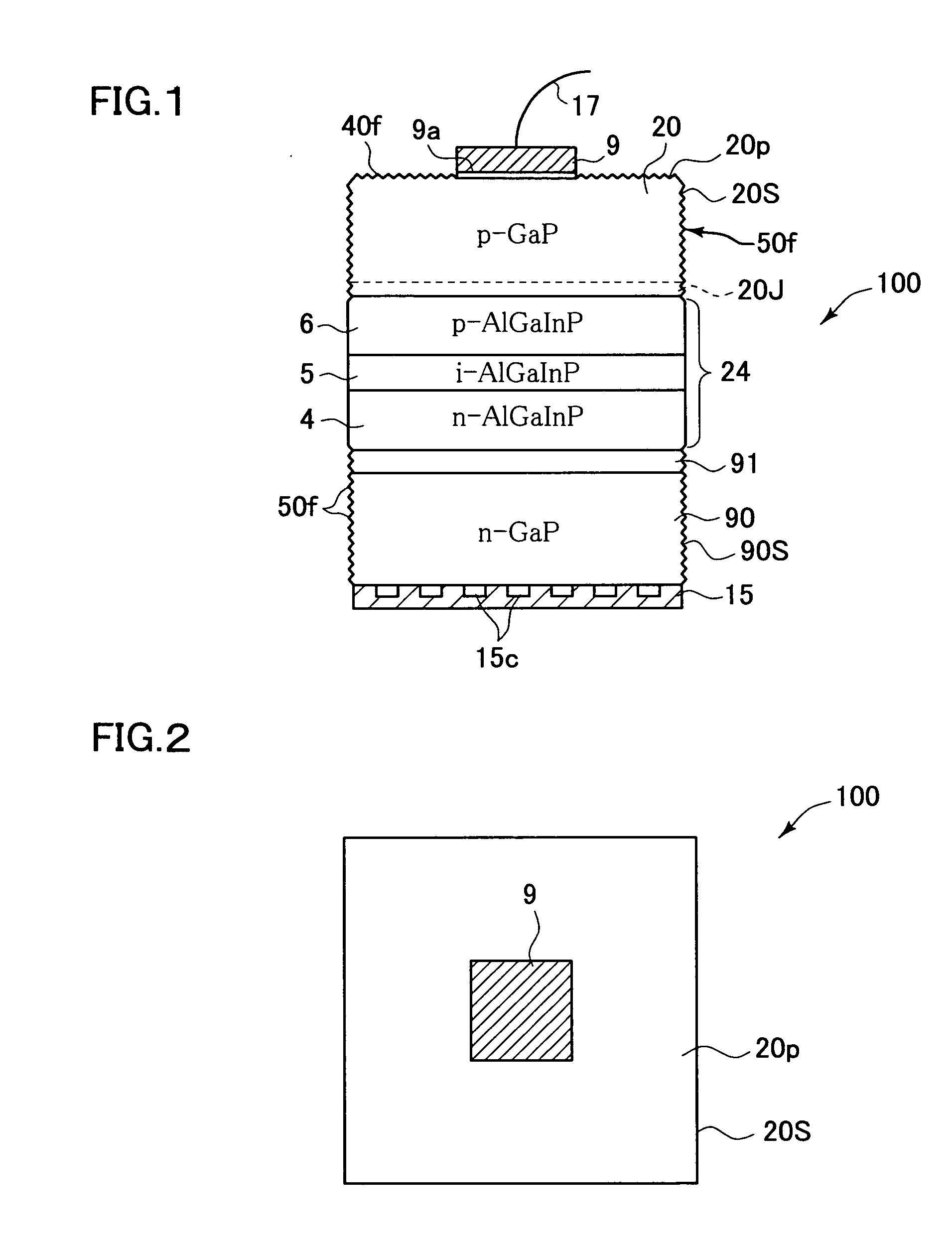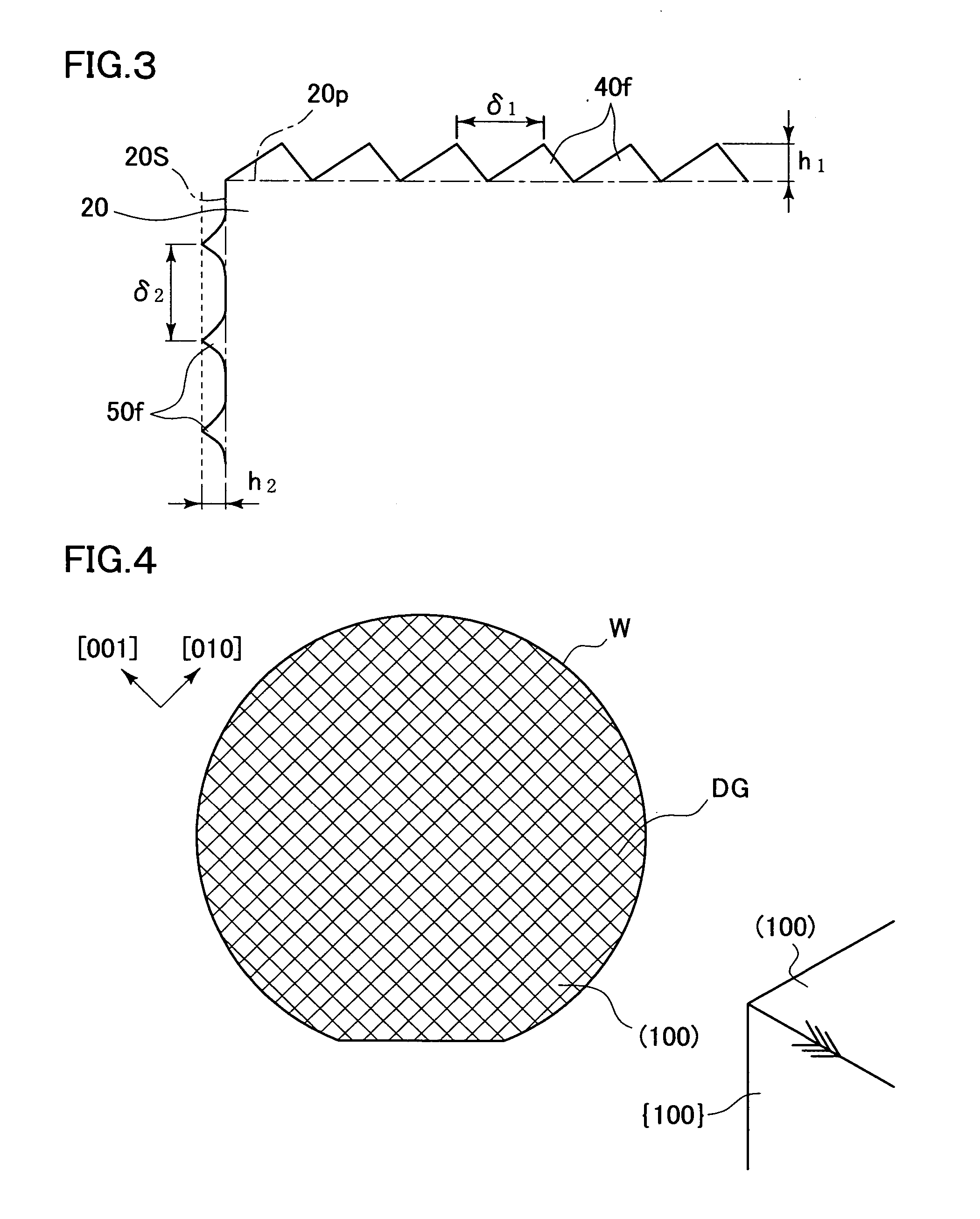Method of Fabricating Light Emitting Device and Thus-Fabricated Light Emitting Device
- Summary
- Abstract
- Description
- Claims
- Application Information
AI Technical Summary
Benefits of technology
Problems solved by technology
Method used
Image
Examples
Example
[0081] Paragraphs below will describe best modes for carrying out this invention referring to the attached drawings.
[0082]FIG. 1 is a conceptual drawing of a light emitting device 100 as one embodiment of this invention. The light emitting device 100 has a light emitting layer section 24 composed of a III-V compound semiconductor, and a GaP light extraction layer (p-type herein) as a first GaP transparent semiconductor layer, formed on a first main surface side of the light emitting layer section 24. On a second main surface side of the light emitting layer section 24, a GaP transparent substrate layer 90 as a second GaP transparent semiconductor layer is disposed. In this embodiment, a chip of the light emitting device 100 has a plain geometry of 300-μm square.
[0083] The light emitting layer section 24 has a structure in which an active layer 5 composed of a non-doped (AlxGa1-2)yIn1-yP alloy (where, 0≦x≦0.55, 0.45≦y≦0.55) is held between a p-type cladding layer (first-conductivit...
PUM
 Login to View More
Login to View More Abstract
Description
Claims
Application Information
 Login to View More
Login to View More - R&D
- Intellectual Property
- Life Sciences
- Materials
- Tech Scout
- Unparalleled Data Quality
- Higher Quality Content
- 60% Fewer Hallucinations
Browse by: Latest US Patents, China's latest patents, Technical Efficacy Thesaurus, Application Domain, Technology Topic, Popular Technical Reports.
© 2025 PatSnap. All rights reserved.Legal|Privacy policy|Modern Slavery Act Transparency Statement|Sitemap|About US| Contact US: help@patsnap.com



